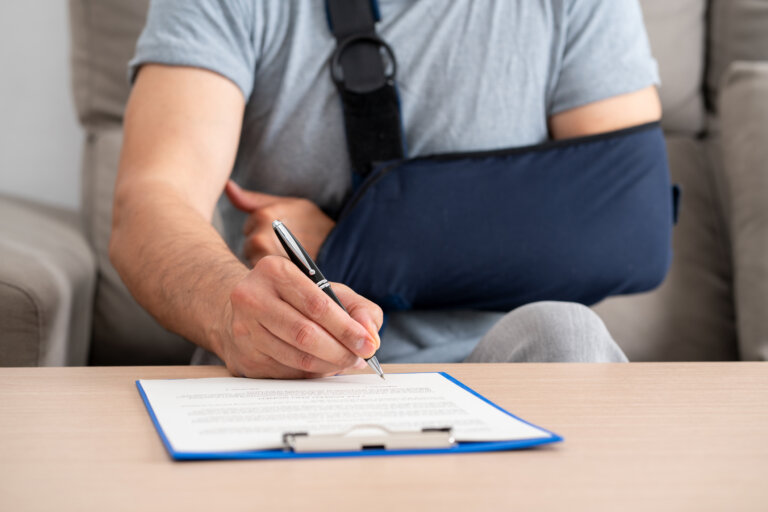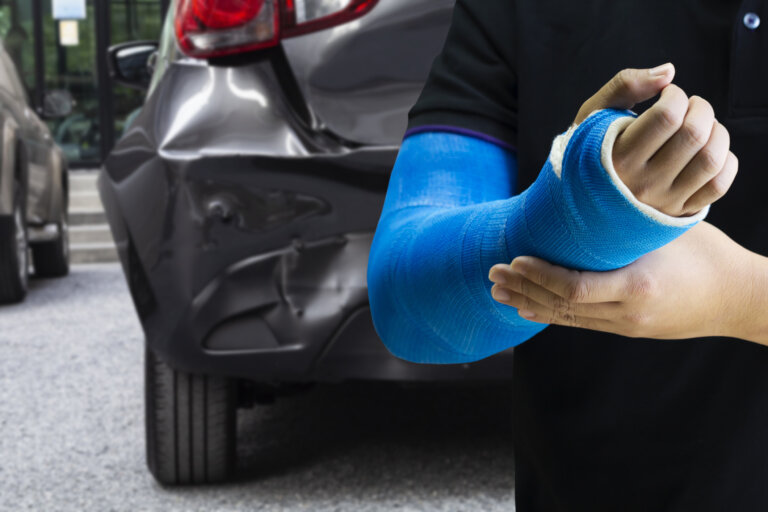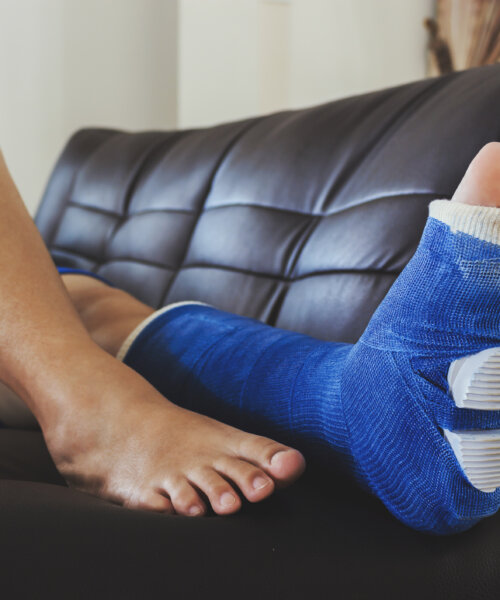What Constitutes Personal Injury in California?
A personal injury occurs when another person’s actions cause you physical, emotional, or psychological harm, whether it was intentional or not. Through a personal injury claim, the plaintiff can seek damages from the defendant to cover the losses they suffered due to the injury caused by the defendant’s actions.
Most personal injury cases focus on physical injuries, not only because they are the most common type of injury but also because they are often the easiest to prove. Typically, compensation for emotional and psychological injuries is sought alongside compensation for a physical injury rather than on their own.
Common Types of Personal Injury Claims
Personal injury claims can take many forms, but the most common is for an injured plaintiff to seek damages from an individual, business, or government entity for their role in causing the plaintiff physical harm. Some of the most common types of personal injury claims in California include:
- Slip-and-fall accidents, where the defendant’s negligence caused or allowed the property hazard that injured the plaintiff to exist
- Motor vehicle accidents, where the defendant’s distracted, intoxicated, or reckless driving contributed to the collision and the plaintiff’s injuries
- Construction site accidents, where a contractor’s inexperience with heavy machinery caused severe injuries to the plaintiff
- Defective product accidents, where a defect in the design, manufacturing, or warning labels of a product harmed the plaintiff, causing the manufacturer to be strictly liable for their damages
Basics of a Personal Injury Lawsuit
A personal injury lawsuit has four main components. You must demonstrate that the defendant owed you some level of care, that they breached that level of care, that their breach caused your injuries, and that you suffered losses due to your injuries.
For example, in a car accident case, you could show that the other driver was responsible for driving in a manner that doesn’t endanger other motorists, that they breached that responsibility by speeding, that their speeding caused them to rear-end you, and that you suffered injuries because of the rear-end accident that resulted in medical bills.
How to Build Your Personal Injury Case
When building a strong personal injury case, there are several key components you must keep in mind:
- Liable Parties: Identifying the party or parties liable for your injuries is crucial for recovering the compensation you deserve.
- Cause of Action: You must determine what cause of action you are bringing your lawsuit under, such as negligence, strict liability, or intentional harm.
- Damages: Before you can seek compensation for your injuries, you must determine the value of that compensation with the help of a skilled lawyer.
- Evidence: Robust evidence is the backbone of any personal injury lawsuit. Without the right evidence, securing the compensation you need can be challenging.
- Deadlines: It’s important to keep in mind the various deadlines associated with your case, including the deadlines for filing your lawsuit and various legal motions.
Important Evidence For a Personal Injury Claim
Various types of evidence are used in personal injury claims, depending on the circumstances of the incident. Some of the most commonly used forms of evidence include:
- Accident scene photographs
- Security, traffic, dashboard, or mobile phone camera footage
- Eyewitness statements
- Expert testimony
- Medical records
The Personal Injury Claim Process

The personal injury claim process involves several key steps. Depending on the circumstances of your case, you may only have to go through the first few steps before your case is settled. More complex cases may have to go through the entire process, including trial. How far into the process your case goes will significantly impact how long it takes to recover the compensation you deserve.
Receiving Medical Treatment
The first step is to seek immediate medical treatment for your injuries. The sooner you seek treatment, the better, as it will help you recover and show the defendant’s insurance company that you took your injuries seriously.
You should also follow up with your treatment until you fully recover or reach maximum medical improvement (MMI). MMI is the point at which further treatment is unlikely to improve your condition.
Investigations
During your lawyer’s investigation into the incident, they will identify all liable parties and gather evidence to hold those parties financially accountable.
Pre-Suit Negotiations
Once your lawyer has the evidence they need, they will draft a demand letter and serve it to the defendant. This letter outlines the incident, your injuries, the compensation you’re seeking, and the evidence you have. At this point, the defendant or their insurance company may choose to negotiate a settlement before you file a formal lawsuit.
Filing Your Lawsuit
If an initial settlement can’t be reached, your lawyer will file your lawsuit with the county court where your injury occurred or where the defendant is located.
Discovery Phase
After filing your lawsuit, your case enters the discovery phase, where the parties can request documents and other evidence from each other to gain a complete picture of the case. You may have to give a deposition and answer questions about the incident at this stage.
Settlement Negotiations
Before your case proceeds to trial, there is usually another round of settlement negotiations now that both parties better understand the case’s strengths and weaknesses.
Trial
If a fair settlement still can’t be reached, your lawyer will take your case to trial and present it before a judge and jury, seeking the maximum compensation available.
What Damages Can Be Recovered in a Personal Injury Claim?
Most California personal injury cases involve economic and non-economic damages, which refer to the compensation a plaintiff seeks from the defendant for their injuries.
Economic Damages
Economic damages are the compensation you seek for your tangible financial losses, including medical expenses, lost wages, loss of future earning potential, and property damage.
Non-Economic Damages
Non-economic damages are the compensation you seek for your intangible losses, including pain and suffering, emotional distress, loss of enjoyment of life, and scarring and disfigurement. Since these losses have subjective value, working with a skilled attorney who can accurately assess them is essential.
How Much Is My Injury Worth?

The value of your case depends on various factors, including the extent of your injuries, their impact on your life, your degree of fault for the incident, and the defendant’s insurance policy limits and personal assets. It could be worth anywhere from a few thousand to a few million dollars, and we can’t say where in that range it could land until we’ve had a chance to review your case.
Who Can You Sue For Your Injuries?
You can generally sue any party who contributed to the incident that harmed you for your injuries. The main exception to this is if you are an employee injured on the job. You cannot sue your employer in that case, as workers’ compensation likely covers your injuries. However, you could still sue a third party who contributed to the incident.
What If Multiple Parties Are at Fault?
If multiple parties are at fault for the incident that caused your injuries, you can file lawsuits against each of them. This can be extremely important for recovering the compensation you deserve for your injuries, as insurance policy limits can make it hard to obtain the full amount from a single defendant.
Cases with multiple defendants are far more complex, making working with an experienced team of personal injury lawyers essential. A truck accident, where drivers, trucking companies, cargo loaders, and others could all share liability, is an example of an injury case involving multiple parties.
Can I Still Claim Compensation If I Am Partially at Fault for My Injury?
In Li v. Yellow Cab Co., the California Supreme Court determined that the state would follow a pure comparative negligence rule, which allows plaintiffs to seek compensation for their injuries even if they are partially at fault for the incident that caused them. This rule also reduces a plaintiff’s awarded damages by a percentage equal to their degree of fault. For example, if you were found to be 20 percent at fault, the defendant would only be liable for 80 percent of your damages.
While this rule specifically applies to trial awards, insurance companies rely on it when making settlement offers. If the insurance company believes you will be assigned a specific degree of fault at trial, they will reduce their settlement offer accordingly.
It’s important to work with a skilled attorney who can maximize your compensation by presenting evidence to reduce your degree of fault.
Do I Need to Hire an Attorney for a Personal Injury Claim?
The best way to protect your rights and increase your odds of recovering the maximum compensation available is to hire a personal injury attorney to handle your claim. They’ll use their knowledge and experience to collect the right evidence, negotiate with the insurance companies, and represent you at trial.
Risks of Pursuing an Injury Claim Without an Attorney
Some of the most common risks of attempting to pursue a personal injury claim without an attorney are:
- Not understanding the true value of your claim
- Failing to collect the right evidence to prove your case
- Failing to identify all of the liable parties
- Accepting a lowball settlement offer from the insurance company
- Failing to meet the various deadlines associated with your case
What Can I Do If My Family Member Died From a Personal Injury?
If your family member died due to a personal injury, the two ways you may be able to seek compensation are through a wrongful death lawsuit or survival action:
- Wrongful death lawsuits compensate the deceased’s family for the loss of their loved one. Surviving spouses, domestic partners, children, parents, or the personal representative of the deceased’s estate can file a wrongful death lawsuit. Through this lawsuit, you can seek compensation for funeral and burial expenses, emotional distress, loss of the deceased’s financial support, loss of consortium, and more.
- Survival actions are personal injury lawsuits that the deceased could have brought had they not died. These lawsuits “survive” the deceased and can be carried on by the personal representative of their estate. They seek the same damages as a typical personal injury lawsuit, which are then given to the estate to be distributed among the deceased’s heirs.
Contact Our East Bay Area Personal Injury Attorneys
Contact Casper Meadows Schwartz & Cook’s skilled California personal injury attorneys for a free consultation about your case. Our attorneys will review the details of the incident, explain your options for seeking the compensation you need and deserve, and answer any of your questions about the legal process.


